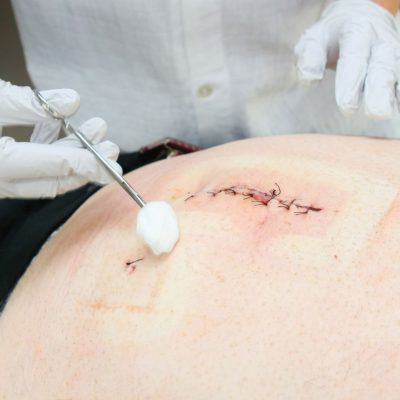Hernia Surgery
The protrusion of the abdominal organs in a sac from a weak area in the abdominal wall is called a hernia. It can occur congenitally or later. Hernias get bigger over time and may cause more serious complaints other than swelling and pain.

What is Hernia?
Abdominal hernia is a problem caused by a weakening of an organ or a piece of tissue in one of the muscle walls surrounding the abdominal cavity. Hernias may be congenital or acquired.
Since the hernia grows over time, the patient complains of swelling, sharp and constant pain in the groin.

How to diagnose hernia?
The most common areas where abdominal hernia is seen in the body are groin, umbilical circumference and previously incised areas. It occurs with swelling and pain under the skin, for reasons such as heavy lifting, severe coughing and constipation. Pain could be sudden and sharp, can be relieved by resting. Constant pain, swelling and redness is a condition that requires medical attention.
Why hernia develop in people?

How to treat hernia?
Hernias usually do not get better on their own, and surgery may be the only way to repair them. Patients who are using groin ligaments and similar devices, could make the operation more complicated.
The two main types of hernia surgery are open and laparoscopic repair. In open hernia repair surgery, a single long incision is made in the groin by the doctor. The procedure should performed under anesthesia. Patient is allowed to return home on the same day that the surgical procedure performed.
In laparoscopic hernia repair, a thin tube containing a light source and a camera are inserted through a hole so the surgeon can see inside of the abdomen. With the help of two small holes, a patch is placed on the hernia. This patch placed on the back wall of the abdomen is fixed with small surgical staples. Recovery from laparoscopic surgery generally is faster than open surgery.

Who is candidate for laparoscopic surgery?
The surgeon must evaluate the overall status of the patient before proceeding with a laparoscopic hernia repair. The suitability of the laparoscopic hernia surgery is determined by the previous operations and health status of the patient. These patients can be treated under local anesthesia with the patch method.

